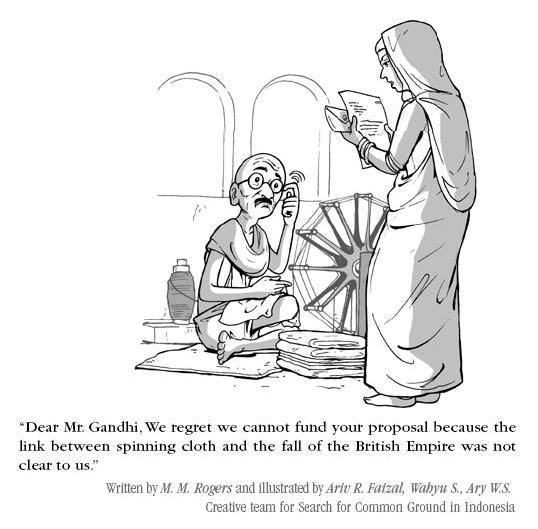The 58th Commission on the Status of Women is currently underway in New York, USA. It started on the 10th of March and will go on till 21st of March. This annual meeting of hundreds of women, men, government officials, ministers, national delegations, girl’s groups, boy’s groups, NGOs, and other stake-holders at the United Nations is to discuss this year’s priority theme, Challenges and achievements in the implementation of the Millennium Development Goals for women and girls.
Inevitably there are a whole host of new initiatives and campaigns that are launched/announced at this annual meeting. This year I have started my own ‘campaign’ to gather information about all the campaigns both launched and mentioned during #CSW58 and compile them in one place. This is an incomplete list in all likelihood but my hope is that I will be able to get people to leave comments with those that are missing from this compilation to help me along!
So lets get started shall we!
Campaigns @ CSW58
Tweets about the various campaigns launched or mentioned at CSW58.
-
Stop Rape in Conflict: http://www.stoprapeinconflict.org/campaign_call …
-
European Commission campaign: Science its a girl thing
-
 Science: it’s a girl thing! | Science: It’s a girl thing!
European Commission › Research & Innovation › Science: It’s a girl thing! › Science: it’s a girl thing!
Science: it’s a girl thing! | Science: It’s a girl thing!
European Commission › Research & Innovation › Science: It’s a girl thing! › Science: it’s a girl thing! -
Campaign to build on equality, based on the stereotypes you are trying to fight. “Science: It’s a girl thing!” https://www.youtube.com/watch?v=g032MPrSjFA …
-
ITU's campaign: Girls in ICT Day 24 April
-
 #csw58 Girls in ICT Day 24 April open up their world @AWAVA_women @DV_NSW pic.twitter.com/1MjQ2WfuEJ
#csw58 Girls in ICT Day 24 April open up their world @AWAVA_women @DV_NSW pic.twitter.com/1MjQ2WfuEJ -
UN Women campaign: He for She heforshe.org
-
@phumzileunwomen shares that the campaign #HeforShe reached over 19m people thus far! @UN_Women @Empower_Women #CSW58
-
UN Women campaign: Beijing+20
-
#CSW58 @UN_Women campaign #Beijingplus20 Focuses 1)commitment 2)capacity building 3)communication 4)cities for #CEDAW http://www.ngocsw.org
-
From the NGO briefing, “#Empoweringwomen is empowering humanity” an upcoming @Unwomen campaign. @WomenNC @womenlive #CSW58
-
Zimbabwe Campaign: http://www.unicef.org/esaro/5440_zimbabwe_abuse.html …
-
The Coalition Against Trafficking in Women and Girls in Latin America and the Caribbean
-
Today we present the Campaign Against #SexTourism Brazil 2014-2016 At UN-CSW58. Support, Promote, sign at http://www.catwlac.org/inicio/2014/03/07/adhierete-campana-para-erradicar-el-turismo-sexual-y-la-explotacion-sexual-comercial/ …
-
Unbreakable Campaign by Progressio http://www.progressio.org.uk/unbreakable …
-
 Our campaign action has been handed in to @JustineGreening at the #CSW58! Thank you to all for taking action pic.twitter.com/yBteWUU8cy
Our campaign action has been handed in to @JustineGreening at the #CSW58! Thank you to all for taking action pic.twitter.com/yBteWUU8cy -
Plan Global: Because I am a Girl http://plan-international.org/girls/ …
-
.@PlanGlobal‘s #BecauseIAmAGirl Campaign looked to support 4million girls directly through programs #csw58 #vawg
-
BanBossy banbossy.com
-
 We pledge to #banbossy &join @sherylsandberg @LeanInOrg @girlscouts @FLOTUS @Beyonce &more! http://banbossy.com pic.twitter.com/8bPdvIC0Mq
We pledge to #banbossy &join @sherylsandberg @LeanInOrg @girlscouts @FLOTUS @Beyonce &more! http://banbossy.com pic.twitter.com/8bPdvIC0Mq -
SG's UNiTE Campaign
-
-
Cities4CEDAW campaign una-sf.org/blog/
-
 Mayor Shelby Welsch of University City, MO, at #Cities4CEDAW Campaign @NGO_CSW_NY #CSW58 pic.twitter.com/dzxexxf0cO
Mayor Shelby Welsch of University City, MO, at #Cities4CEDAW Campaign @NGO_CSW_NY #CSW58 pic.twitter.com/dzxexxf0cO -
16 Days of Activism campaign
-
Balakrishnan: The 16 Days campaign from @CWGL_Rutgers has been on going for 20 years. #CSW58 #WSW2015 #WILPF100
-
Vlogs by Mandem On The Wall's bbc.co.uk/newsbeat/26545056
-
New campaign by @ukhomeoffice using vbloggers addressing abuse amongst teenagers http://www.bbc.co.uk/newsbeat/26545056 … #CSW58 #vawg #endgbv #thisisabuse
-
Say No to Exploitation of Humans for Profit campaign
-
Global campaign “Say No to Exploitation of Humans for Profit” launches Mar 13 11:30EST, rm C (CB) UN Headquarters #CSW58 @TIATaskForce
-
Equal Pay Day Campaign: equal-pay-day.com/
-
 Equal Pay Day Campaign- if women in N.A. made same as men= $430,000 in her lifetime! #CSW58 pic.twitter.com/2u2kHIbxUT
Equal Pay Day Campaign- if women in N.A. made same as men= $430,000 in her lifetime! #CSW58 pic.twitter.com/2u2kHIbxUT -
A 12 year old twin Sister & Brother just addressed the room to start their campaign to stop and END #FGM #Inspiring #YoungVoices #CSW58
-
Men Care campaign mencare.org
-
The impetus for the MenCare campaign: to address the unfair care work divide, & because, men gravitate towards the idea. #MenCarePlus #CSW58
-
Unite 4 Education campaign
-
Learn more about @eduint‘s @unite4ed campaign here: http://www.unite4education.org/ #investingirls #teachlearn #CSW58
-
World Pulse's 'Women weave the web' campaign: bit.ly/1fCOxLd
-
.@WorldPulse currently doing a campaign around digital access, literacy & empowerment; want girls & women to write & speak out. #CSW58
-
Intel's She will connect campaign
-
Microsoft's Big Dream movement
-
@Empower_Women Rane Johnson of @Microsoft announces launch of Big Dream Movement to support women & girls interested in #ICT careers #CSW58
-
Let Girls' Lead Campaign letgirlslead.org/
-
 At the global launch of ¡PODER! which highlights the work of @LetGirlsLead in Guatemala! #CSW58 #letgirlslead pic.twitter.com/UQjKBDALCM
At the global launch of ¡PODER! which highlights the work of @LetGirlsLead in Guatemala! #CSW58 #letgirlslead pic.twitter.com/UQjKBDALCM -
Cyber safe girl cybersafegirl.ca/
-
 With 3 of 4 Atlantic Ministers respon for Status of Women @ cyber safe girl launch, amazing leaders #CSW58 #cybergirl pic.twitter.com/z8efz4D3oD
With 3 of 4 Atlantic Ministers respon for Status of Women @ cyber safe girl launch, amazing leaders #CSW58 #cybergirl pic.twitter.com/z8efz4D3oD -
International Women's Media Foundation http://www.iwmf.org/get-involved/advocacy/ …
-
ISIS's linking the networks campaign bit.ly/1g2Oiic
-




























